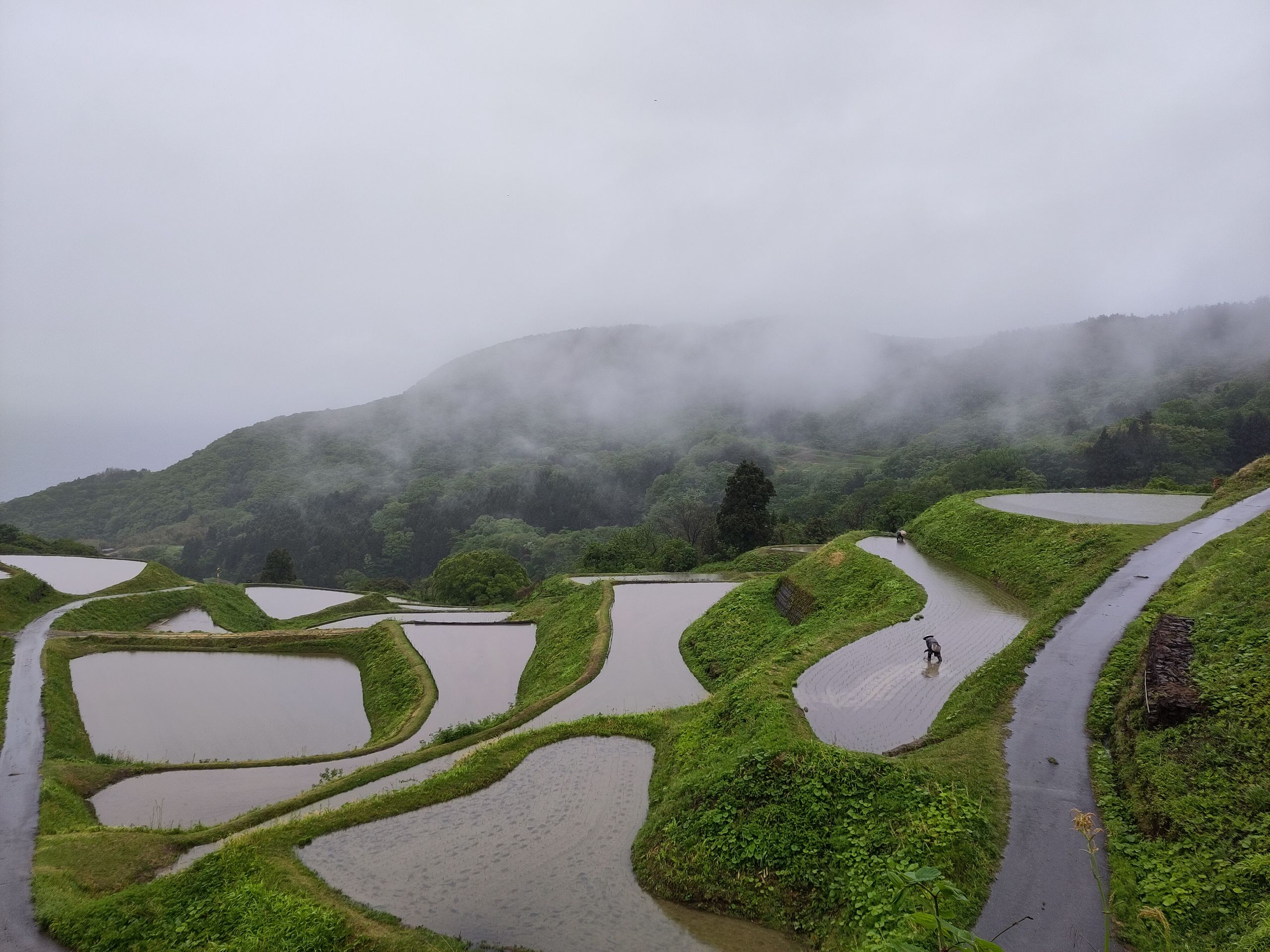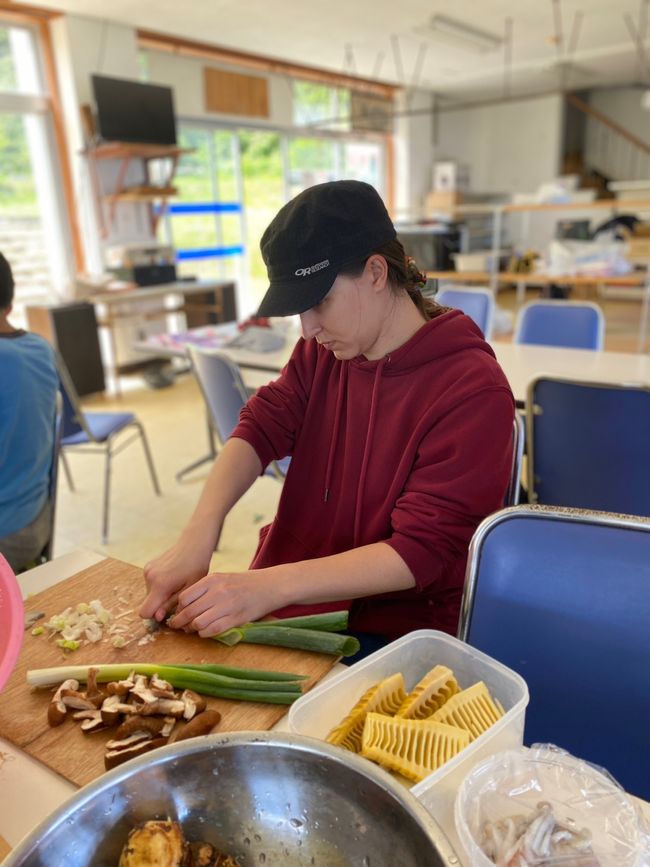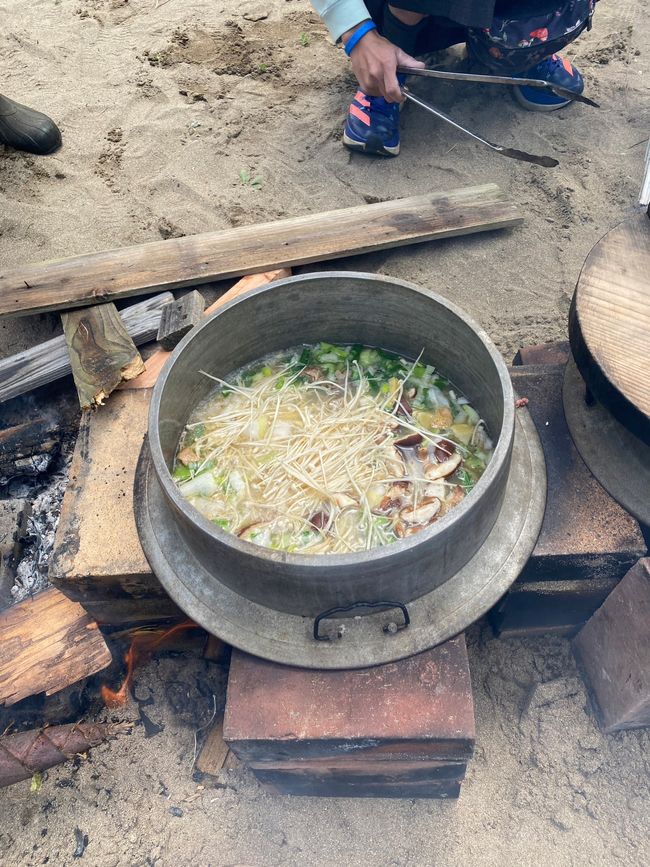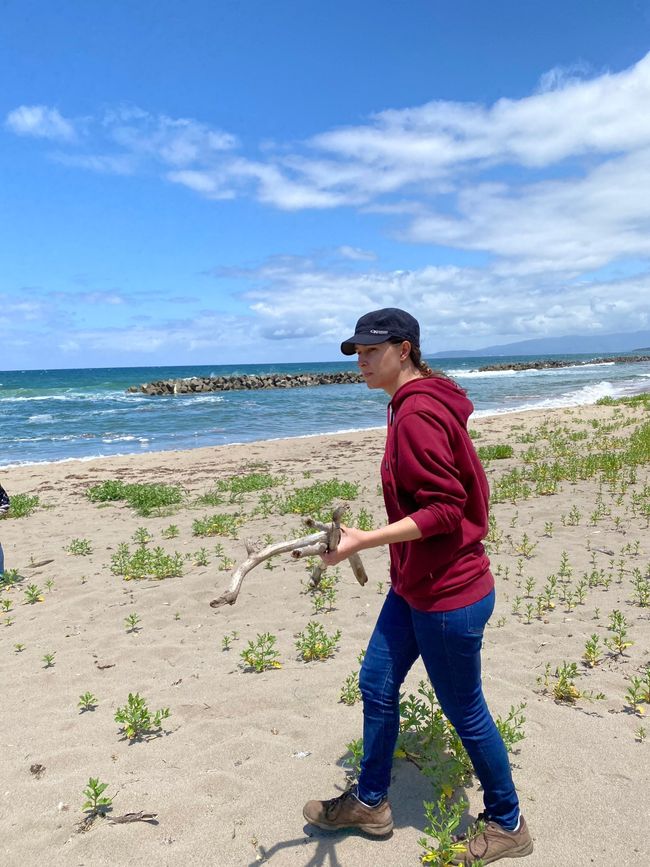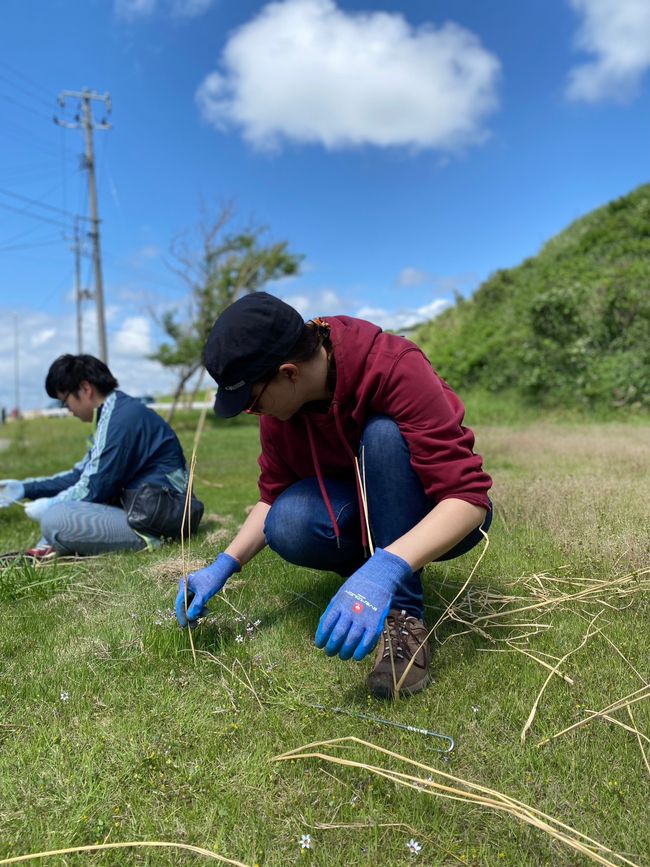Sado - Stone Age cooking with primary school children
Buga: 19.06.2023
Biyan kuɗi zuwa Newsletter
The next free day unfortunately was very rainy and since I need to do laundry anyway, I'll just stay inside and snuggle up with a book in my futon. In the evening, two new participants arrive and they will be staying in my room. On Saturday, we have a full program. We help with a Stone Age activity where children in elementary school learn about life in the Stone Age and why it was more sustainable than our life today. Using some homemade wooden fire drills, the children try to create a flame. Since it's a very humid day, it doesn't work as well and we use a match for the cooking fire instead. We cook in a clay pot placed directly on the fire. But first, we have to cut the vegetables. Someone had the brilliant idea of using stone tools for that. You might think that it's somehow possible with a sharpened stone, but the stones look like someone just found them on the beach and thought, 'Okay, this one is a bit sharp, I'll take it.' Since the children take the stones first, we only get the duller ones. And I don't mean to brag, but I think I did pretty well. I was praised a lot for the unbelievably useful talent of cutting a spring onion into strips with a 2 cm stone, and some people asked me if I had ever done something like that before. Well, I have training in working with small things. Half an hour later, we're finally done and our fingers are completely sore and cramped. While we wait for the food to be ready, we collect driftwood on the beach for the next time we cook over the fire. The children pass the time playing table tennis and tag. The finished soup tastes twice as good after all the effort and has some ingredients that I haven't tried before. For example, taro root, which is like a potato but much softer and a bit mushy. After dinner, we go to the campground across the street. There, we dig small holes and fill them with straw. The purpose is to prevent proper water circulation in the soil because it's sealed by the surrounding concrete. The straw holes are supposed to help old water evaporate better and new water to be absorbed more easily. We spend about an hour and a half at the campground and then return to the beach. After a short break, we want to collect garbage with the children again. Since they were playing on the beach while we were digging holes, Nozomi calls them back to the beach kitchen with her microphone. We realize that we probably can't start cleaning up yet. Most of the children are soaking wet and covered in sand. So, they are sent to take a shower and change into dry clothes first. Then we can finally get started. Although the rascals have been running around all day, they still have the energy to collect more garbage than the adults. It's not as much as with the students from Tokyo, but still about 30 bags of plastic that will no longer be littering the beach. As we did last time, we briefly discuss what we have found. One of the girls is very sad about all the trash, and she only starts smiling again when everyone gets some candy as a reward. Hopefully, everyone here has learned that we should try to avoid plastic as much as possible and can be more mindful of it in the future.
Biyan kuɗi zuwa Newsletter
Amsa
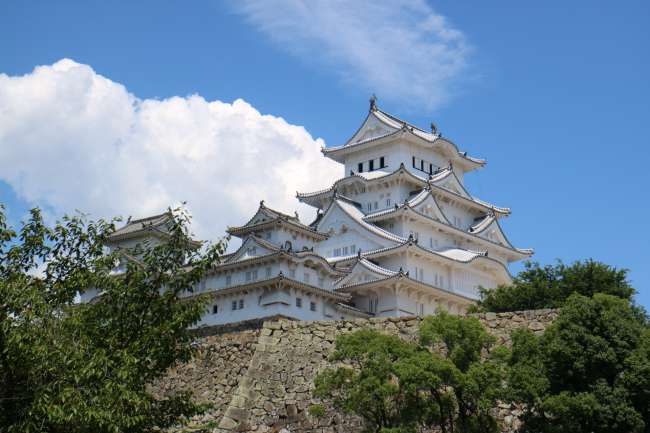
Rahoton balaguro Japan
